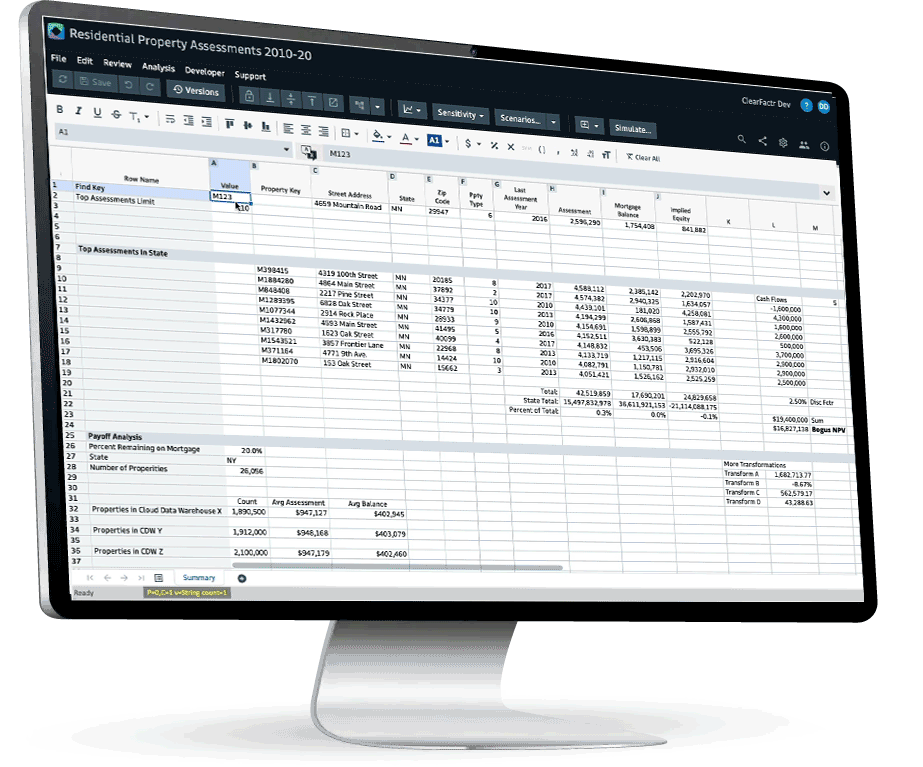ClearFactr exists to turn your firm's spreadsheets into Software Capital. And with today's Gen/Agentic AI tools, there's never been a better and easier time to do so.
Back in 1996, I wrote a short whitepaper called Software Capital - Achievement and Leverage. The stacked gold bricks above represent John Lakos' classic depiction of the value created via the thoughtful accumulation of these software assets. But perhaps the most notable aspect of the piece is that nearly 30 years later, it’s still highly relevant. Some of its key points included:
-
The value derived from factoring potentially duplicated solutions into re-usable components
-
The importance of making these components easily discoverable
-
The reduction in time to market with a new solution as a result of starting from pre-built, reliable, and understandable components
-
The benefits to the enterprise of being faster to market, due to profit opportunities being front loaded with respect to time
Equally relevant and prescient is how much these points apply, philosophically, to what ClearFactr is today.
When a firm has hundreds, thousands, even millions of spreadsheets flying around, all kinds of dysfunctions emerge. These dysfunctions are never intentional. When each particular spreadsheet was created, it solved a need at the time, from the mundane to the critical. But as workflows develop around a particular spreadsheet, or a group of them, the overall effectiveness of the firm will suffer due simply due to the way legacy spreadsheets work. These dynamics are straight out of the Software Capital section "The problem, its sources and its symptoms"(!)
Let's examine how various liabilities emerge and persist with legacy spreadsheets, and how ClearFactr transforms the situations into accumulating assets.
| Legacy Spreadsheet Liabilities |
ClearFactr Assets |
|
Time lost trying to find the correct version of an older file.
|
Searching and finding the model at the Dashboard in a variety of ways, knowing you're always getting the latest version.
|
|
Realizing that this version seems different, but not knowing how it was changed.
|
Using the Versioning Tools to review changes and compare differences, and seeing who did what, and when.
|
|
Stale data, introducing the risk of faulty/flawed analysis. Not being able to fully leverage your data engineering team.
|
Driving the model with shared data, factored out of the model into a cloud data warehouse ("CDW"), accessible on demand via familiar spreadsheet syntax.
|
|
Tedious debugging and lack of comprehension.
|
Computational clarity stemming from native model explanation tools.
|
|
Computational complexity and duplicated business logic to support sensitivity and scenario analysis
|
Native sensitivity and scenario analysis tools allowing for simpler, yet more powerful models
|
|
Trapped data and analysis, unable to support broader firm workflows and AI training models.
|
Easily incorporating ClearFactr models into corporate workflows via our Server-side API. Data moved to CDWs can now train AI models.
|
|
Challenging audience access controls with associated IP risk
|
Easy audience management and monitoring
|
You're not hallucinating: Now is the time for a great ROI
With powerful AI-supported tools bringing software development capabilities to more people than ever, the time has never been better to tackle your firm's spreadsheet woes. As these legacy liabilities are turned into enduring, leverageable assets, they're transformed into Software Capital much in the way a "core engineering" team create the same.
As a special case, it's worth noting that having business logic buried in software, away from the business that knows it the best, can also be a liability. A simple business logic change might require a lengthy SDLC process. Turn that liability into an asset by putting the logic into ClearFactr where the business can see and manage it themselves, and make a simple API call to that model to use it, from once place, or hundreds. Agentic AI can then be used to orchestrate workflows that combine the best of custom software and ClearFactr's spreadsheet UI/UX and APIs, producing the most optimal experiences and solutions for end-users, with the least amount of spreadsheet risk.
Once again, some of the Software Capital piece's conclusions provide a wonderful analogy:
"The bottom line with Software Capital is better business solutions, delivered faster.
...
Organizations that recognize and address the need to form a base of Software Capital will enjoy a competitive advantage. Rather than simply working harder, they work smarter. Their higher productivity and shorter time to market allow them to capture more profits from business opportunities."
Contact us to discuss how ClearFactr and our partners can help.

